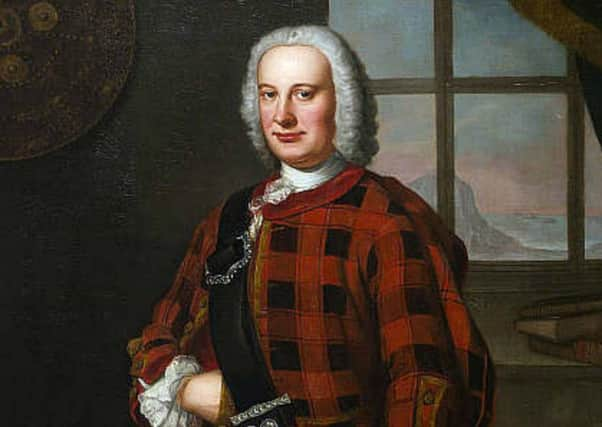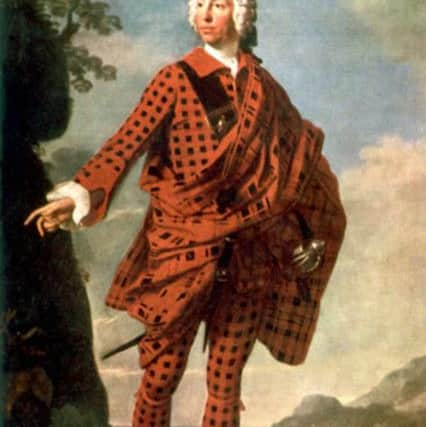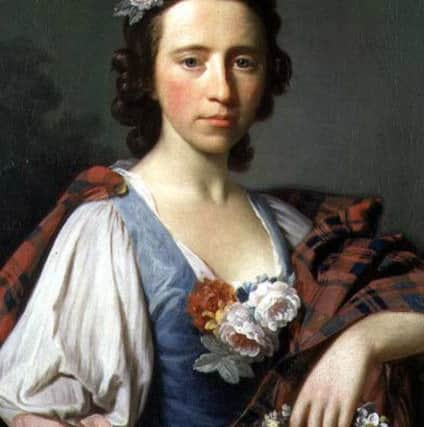Myth buster: Was tartan really banned after Culloden?


One of the widely believed facts in the history of tartan is that it was banned by Act of Parliament following the defeat of the Jacobites at the Battle of Culloden in April 1746.
The 1747 Act, often referred to as Proscription or the Dress Act, has also been credited with banning the playing of bagpipes, speaking Gaelic and gathering family members together in public, none of which is true.


Advertisement
Hide AdAdvertisement
Hide AdBut what about tartan? The Act of Proscription followed the earlier, and ineffectual, Acts of 1716 and 1725 and was:
‘An act for the more effectual disarming the highlands of Scotland; and for the more effectual securing the peace of the said highlands; and for restraining the use of the highland dress.’
Essentially, the third Act was a revision of the 1725 enactment but with an extra section added to ban what the Government considered to be a martial dress that was central to the Jacobite identity. The relevant section of the Act stated:


“That, from and after the first day of August, one thousand seven hundred and forty seven, no Man or Boy, within that Part of Great Britain called Scotland, other than such as should be employed as Officers and Soldiers in his Majesty’s Forces, should, on any Pretence whatsoever, wear or put on the Clothes, commonly called Highland Clothes; (that is to say,) The Plaid, Philebeg or Little Kilt, Trowse, Shoulder belts, or any Part whatsoever of what peculiarly belongs to the Highland Garb, and that no Tartan, or Partly-coloured Plaid or Stuff shall be, used for Great Coats or for Upper Coats, under the Penalties therein mentioned; and the Time appointed for laying aside the said Highland Dress was, in certain Cases therein mentioned, further prolonged by several Acts, one made in the twentieth, and the other in the twenty-first Year of the Reign of his said late Majesty King George the Second: And whereas it is judged expedient that so much of the Acts above mentioned as restrains the Use of the Highland Dress should be repealed: Be it therefore enacted by the King’s most Excellent Majesty, by and with the Advice and Consent of the Lords Spiritual and Temporal, and Commons, in this present Parliament assembled, and by the Authority of the fame, That so much of the Acts above-mentioned, or any other Act or Acts of Parliament, as restrains the Use of the Highland Dress, be, and the fame are hereby repealed.”
The highlighted section has been taken as evidence that the Act banned tartan; however, a reading of the full text gives a completely different meaning: ‘…and that no Tartan, or Partly-coloured Plaid or Stuff, shall be used for Great Coats or for Upper Coats,…’
Read in the context of the whole paragraph, it is quite clear that this section is the end of a list of Highland Clothes and that there is no mention of tartan cloth being banned. Even if it had, as the Act applied to no Man or Boy; women could therefore continue to wear tartan clothes.
There is evidence that in the early years that it was quite strictly enforced in staunch Jacobite areas. A report from 1748 tells of a young man in Stathglass who drowned trying to swim a loch to avoid capture whilst wearing a full plaid; and Orinoco, servant to MacLean of Duart, was arrested in Mull for wearing Highland Dress and imprisoned for 6 months.


Advertisement
Hide AdAdvertisement
Hide AdElsewhere the Act seems to have been ignored, especially by the gentry; Norman MacLeod, 22nd Chief and MP for Inverness and John Campbell of Ardmaddie, Cashier of the Royal Bank of Scotland were both painted in full Highland Dress before 1760. So too was the famous Jacobite heroine, Flora MacDonald.
Because the Highlander was forced into Lowland Dress, his everyday link with tartan was lost which resulted in a later perception that tartan itself was banned.
By the time the Dress Act was Repealed in 1782, it’s everyday use had long since been given up. The banning of tartan following the defeat of the Jacobites at Culloden is one of a number of myths surrounding tartan and Highland Dress for which there is absolutely no proof.
In this case, examination of the source material identified the section of the Act that has, and continues to be, misconstrued. Whilst some zealous enforcers of the Act may have regarded tartan and Highland clothes as one and the same, the facts speak for themselves and it is clear that it was not the original intention that the Act should ban the cloth itself.